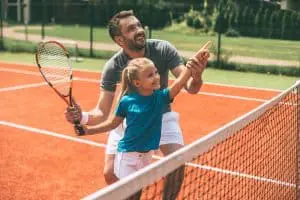
1. Limit Skill Instruction
Limit Instruction to one or two key points. It is common to see teachers tell students too points about performing a skill. I call it “telling them everything they need to know and finding they remember nothing.” It is difficult to remember a series of instructions. Giving students several points related to skill performance leaves them unsure and frustrated; most learners remember only the first and the last points at best. Emphasize one or two key points and then let students practice the skill with their focus on the points you just mentioned.
2. Refrain from lengthy skill descriptions.
When instructions last longer than 30 seconds, students become listless because they cannot comprehend and remember all of the input. Develop a teaching pattern of short, concise presentations alternated with practice sessions. Short practice sessions keep students from getting bored and offer you the opportunity to refocus your students on key points. If you need to instruct for longer than 30 seconds, break it into smaller segments. Allow students time to focus and practice the skills you emphasized after each instructional episode.
3. Present information in an easy form – use analogies
Present information in its most basic, easily understood form. If a class does not understand the presentation, you—not your students—have failed. Check to see if students understand the material by observing them during practice. If they are not performing in a manner you expected, they probably didn’t understand. Use analogies and terminology that they will understand. If you know the student plays a particular sport, try to make your instruction more relatable to them.
4. Offer individual feedback and move away.
When you are offering a student corrective feedback, the tendency is to tell them how they should perform the skill and then observe them to see whether it helps. Usually, it is best to give the feedback and then move to another student so they can practice without fear of failing while you are observing. It usually takes some repetition before the feedback offered can be incorporated into a student’s skill performance.
5. Separate the management and instructional episodes.
Consider the following instructions, given while presenting a new game: “In this game, we will break into groups of five. Each group will get a ball and form a small circle. On the command ‘Go,’ the game will start. Here is how you play the game…” (a long discussion of game rules and conduct follows). Because the instructions are long, students forget what they were asked to do earlier. Or, they think about the group they want to be in rather than listening to the game rules. Instead, move the class into groups of five in circles (management) and then discuss the activity to be learned (instruction). This will reduce the length of instruction and make it easier for students to learn how the game is played.
Looking for some great new team games? Check out Gopher’s ACTION!™ games, available only from Gopher!




